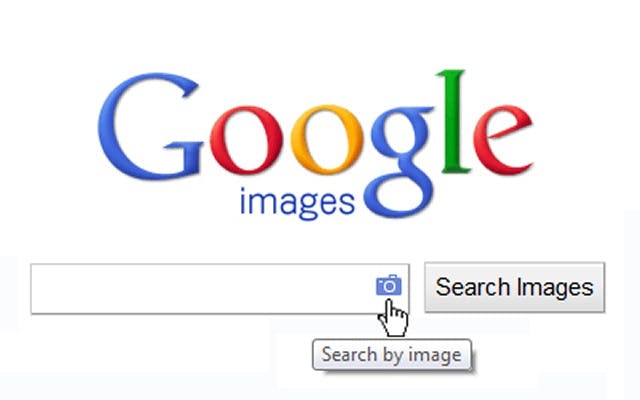There are many reasons why you may need to find out who is in a photo and run a reverse image search. Sometimes, you need to check if the person who just sent you a friend request on Facebook or LinkedIn is the real person or if that person is using a fake profile photo. Alternatively, maybe you are trying to check out the person who invited you on a date and want to be sure that it’s not some crazy person.
In sourcing, a reverse image search can be quite handy when you are trying to find more information about someone. For example, when you are trying to find an email address for someone, and it’s not mentioned on one social profile, it could be on another website. Because many people use the same profile photo on various social sites, a reverse image search is a handy trick to find other social media profiles.
Reverse Image Search
Performing a reverse image search is quite easy. Go to images.google.com, click on the camera icon, upload the image or insert the URL for a photo, and hit search. If you are using the Chrome browser, you can right-click on a picture and then click “Search Google for an image,” and you’ll see your results in a new tab.
It’s quite simple, but Google Image Search is not the only option. There are many other tools you can try, such as image searching via Bing, Yandex, TinEye, and others.
Which One Is the Best?
I had the same question, so I ran a test to find which one gave me the best results. I ran various tests on Google, Bing, Yandex, and TinEye to test a few theories.
To find out which search engine is the best, I created two quite similar tests. For the smaller analysis, I randomly selected four celebrities on Twitter and two people I follow on Twitter who haven’t updated the profile pictures for some time. I also added five random people from LinkedIn, four random profile from Facebook, and I also added my profile photo. I tested all those profiles photos via all the online reverse image search engines I found.
And I also performed a test with a much larger number of profile photos, but the results were quite similar to the first test. The only difference was that Yandex was slightly better than others.
Results

As you can see Google, Yandex, and TinEye will get you the most results.
Other Image Search Sites
Other search engines will help you to find the source of photos on Reddit, such as Karma Decay, and photos or artwork on various other sites.
One of the newest tools is a site called Search Face (www.searchface.ru). This site allows anyone to search on the social media network VKontakte with a single image. After you upload a photo of someone’s face, the site will find pictures of people who have profiles on VKontakte. This tool is quite handy for OSINT specialists when they are trying to identify Russian soldiers or other people living in Russia who have a profile on VKontakte.
You can also use SocialMapper, which can identify or recognize any person through a photograph and search and follow-up on social networks such as Facebook, LinkedIn, Twitter, Instagram, VKontakte, and a few other sites. SocialMapper also collects all the information published by the user. It’s quite an interesting tool.
If you have lots of data and you need to perform some analysis, you can try Amazon Rekognition, which can perform an analysis of either an image or a video. This tool is more than enough to identify objects, text, activities, people, and scenes in your data.
Conclusion
The AI in these tools is getting better every year and imagine what kind of data a company like Facebook already has about our faces and how useful its algorithms are.
In 2014, Forbes published an article called stating, “Facebook researchers are currently developing algorithms called “DeepFace” to detect whether two faces in unfamiliar photos are of the same person with 97.25% accuracy, regardless of lighting conditions or angles.”
You can read more about the DeepFace algorithm here: “DeepFace: Closing the Gap to Human-Level Performance in Face Verification.“
Bing has also introduced a visual search tool that will have a great future. Imagine seeing a photo of a lamp that you would like to purchase, but when you run the image search, you find the same picture but not the lamp itself. That’s why Bing added Visual Search, which lets you search for specific objects within images. You can isolate a particular person or object in the picture, and Bing will find it for you.
More tools like Visual Search will continue to hit the internet because that type of search is excellent, especially when you connect it with shopping. You could find the product you saw and immediately buy it with one more click. There is also a site called This Person Does Not Exist that uses AI to generate endless fake faces.
New technology is wonderful and brings lots of positive aspects into our lives and work, but it also brings negative ones, such as fake news. For example, the OpenAI research group recently announced a new AI writer that can create fake writers. OpenAI decided not to release the technology behind the project publicly because it could be used for the wrong reasons.
Have fun with those tools!
